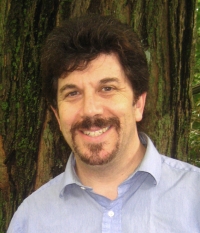非常抱歉,
你要访问的页面不存在,
非常抱歉,
你要访问的页面不存在,
非常抱歉,
你要访问的页面不存在,
验证码:

职称:Professor &Graduate Program Director
所属学校:Boston College
所属院系:morrissey college of arts and sciences
所属专业:Biology/Biological Sciences, General
联系方式:617-552-2779
Ph.D., Tufts University, Sackler School Research:Glucose sensing, signal transduction, and transcriptional regulation in the fission yeast Schizosaccharomyces pombe
How do eukaryotic cells sense their environment and regulate biological processes in response to environmental signals? To address this question, my lab has studied how glucose triggers repression of transcription of the fbp1 gene in the fission yeast Schizosaccharomyces pombe. Combining classical yeast genetics with molecular biology, we identified a number of genes required for both repression and derepression of fbp1 transcription, including almost all of the genes of the cyclic AMP (cAMP) signaling pathway. We have made use of an fbp1-ura4 reporter and the mutations in the cAMP signaling pathway to develop strains for high throughput screens (HTSs) to identify compounds that inhibit cyclic nucleotide phosphodiesterases (PDEs). PDEs are important drug targets and the compounds we identify could be useful in the treatment of some types of cancer, as well as a large number of inflammatory and neurological diseases and even HIV infection. We have completed HTSs for PDE4, PDE7, PDE8, and PDE11 inhibitors. The compounds identified in these screens are remarkable with respect to their biological activity in mammalian cell-based assays given that they have not yet been subjected to medicinal chemistry to enhance their physiochemical and pharmacokinetic properties. Our strain collection includes strains that express 15 of the 21 mammalian PDE genes (representing ten of the PDE 11 families), as well as three Trypanosome PDE genes. We have also developed a PKA-repressed fbp1-GFP reporter that allows us to detect small molecules, cloned genes or mutations that reduce PKA activity. We expressed the canine adenylyl cyclase 5 (AC5- one of 10 mammalian proteins that convert ATP to cAMP) together with the human GNAS1 G alpha that binds to and activates ACs. Using our GFP reporter, we can detect both a basal AC5 activity and a GNAS1-stimulated activity. We have since expressed eight other mammalian ACs and have detected both basal and stimulated activity. This now gives us an ability to expand our HTSs to seek small molecules that inhibit GNAS1 or an expressed AC as well as those that stimulate PDE activity. A 100,000 compound screen for such compounds is currently underway.